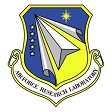AFRL to hold Industry Day webinar for multiple programs
 On June 6, the Air Force Research Laboratory announced an upcoming Industry Day webinar. The deadline for registration is June 15.
On June 6, the Air Force Research Laboratory announced an upcoming Industry Day webinar. The deadline for registration is June 15.
INDUSTRY DAY TITLE: AFRL-J Projects for Spectrum Access R&D Program
1) Timing, Frequency, Navigation and Geodesy (TFNG) Enablers for Dynamic Spectrum Sharing (TEDSS)
2) Extended Small Unmanned Autonomous System (SUAS) Command, Control and Communication (C3) with Agility, Persistence and Efficiency (ESCAPE)
3) EMS Situational Awareness & C2 with Wideband Sensors & Data AnalyticsMEETING DATE: 16 June, 1:00 PM EST – 2:30 PM EST
MEETING LOCATION: Meeting will be webinar format
REGISTRATION DEADLINE: 15 June 2016
The Information Directorate of the Air Force Research Laboratory (AFRL) is sponsoring an Industry Day to provide potential proposers with details on the objectives of the following three projects in advance of a planned Request for Prototype Proposal announcement.
1) Timing, Frequency, Navigation and Geodesy (TFNG) Enablers for Dynamic Spectrum Sharing (TEDSS)Advanced operations in the Electromagnetic Spectrum (EMS) – including Dynamic Spectrum Access (DSA), Synchronous Communications, Multiple-Input Multiple-Output (MIMO), Coherent Geolocation, Distributed Electronic Warfare (EW), and Co-existence of Cognitive Radios with Radar and Counter Remote Controlled Improvised Explosive Device (RCIED) Electronic Warfare (CREW) – requires high-precision timing and frequency references, an understanding of geographical position and local time, and often phase-alignment/coherence. This project seeks to improve the ability for multiple DoD assets to share the EMS with other DoD assets as well as Commercial Interests and Industry through the use of highly-accurate clocks, highly-disciplined local oscillators (LOs), high-fidelity inertial measurement/navigation systems (INS), flexible software-defined radio (SDR)-based Global Navigation Satellite System (GNSS), anti-jam Mobile Ad Hoc Networking (MANET), and open architectures that allow various internal, external, tightly-coupled and loosely-coupled integration of Timing, Frequency, Navigation and Geodesy (TFNG) technology. The result of this project will be new prototypes that can provide the measurements and references necessary to allow themselves and connected systems to make informed decisions regarding the sharing and usage of the EMS in complex and congested environments.
2) Extended Small Unmanned Autonomous System (SUAS) Command, Control and Communication (C3) with Agility, Persistence and Efficiency (ESCAPE)
Unmanned and autonomous systems represent a major pillar in the DoD’s strategy to dominate both the Airspace and the Airwaves. However, until artificially-intelligent and truly-autonomous air vehicles (AVs) can be trusted on the battlefield, they are highly-dependent on the Electromagnetic Spectrum (EMS) for command, control and communication (C3) and require a significant amount of development, testing and training on DoD ranges that already have significant EMS needs. As these Small Unmanned Autonomous Systems (SUAS) fill the skies as well as testing and training schedules, it is vitally important that the C3 systems they use in both line-of-sight (LOS) C3 and beyond/non-line-of-sight (B/NLOS) C3 be: agile and dynamic in terms of frequency bands and channels; small size, weight, power and cost (SWAP-C) to allow cost-effective and feasible integration with SUAS; software-configurable and programmable to incorporate the latest spectrum sharing and multi-mission radio frequency (RF) capabilities; and Modular Open Systems Architecture (MOSA) to prevent obsolescence from future spectrum auctions and changes in policy. The result of this project will be new prototypes that can allow many SUAS to share the airspace and the airwaves in complex and congested EMS environments.
3) EMS Situational Awareness & C2 with Wideband Sensors & Data Analytics
The United States Air Force (USAF) and its Joint Partners require a prototype single-sensor system that can instantaneously monitor non-contiguous spectrum bands, including all bands pertinent to and impacted by AWS-3 auction, sharing, compression and relocation. A recent Defense Science Board (DSB) study concludes that “the U.S. lacks not only current situational awareness of the crowded electromagnetic spectrum (EMS), but also lacks the ability to dynamically make efficient use of the EMS.” The report also stated that “the speed at which modern digital electronics can shift operating modes and techniques has increased dramatically, and the U.S. needs to adapt its use of EMS hardware and software faster to keep up with the speed inherent in today’s electronics.” Thus, this prototype system must be able to provide actionable situational awareness in near-real-time to communication systems, Electronic Warfare (EW) systems and other Spectrum Dependent Systems (SDS) in an Area of Regard (AoR) in order to decrease spectrum contention, fratricide and interference while also improving frequency re-use factor as well as spatial and temporal utilization metrics for all bands pertinent to and impacted by AWS-3 auction, sharing, compression and relocation. The result of this project will be new prototypes that can assist testing, training, developmental and operational systems make informed decisions regarding the sharing and usage of the EMS in complex and congested environments.
This Industry Day is in support of the Section 815 Prototype Other Transaction Agreement with the National Spectrum Consortium; however, all interested parties are eligible to attend the Industry Day regardless of their consortium membership status. The National Spectrum Consortium is an open consortium with a low barrier for membership. Any interested company, academic institution, or contractor can become a member and join the consortium to widen knowledge and technical expertise to continue to advance in technologies and meet Government needs. For more information, interested Parties can visit the consortium website at
http://www.nationalspectrumconsortium.org/.
Full information is available here.
Source: FedBizOpps







